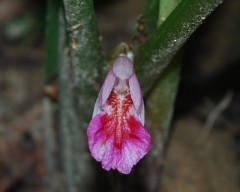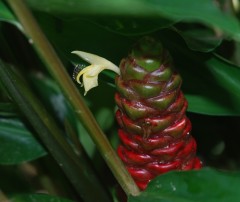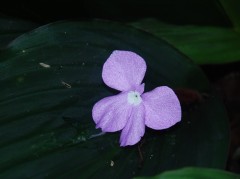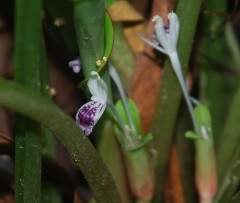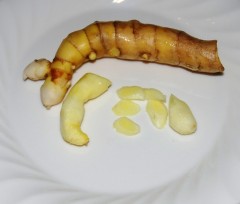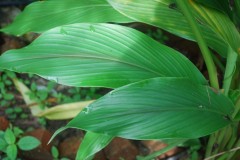Jun 28, 2010
Flowers of the ginger family at the farm
Wild gingers have lovely flowers seldom seen.
Some of the wild gingers planted at our farm are flowering (click on pics for enlarged image).
11:29 Posted in Blog | Permalink | Comments (3) | Tags: boesenbergia rotunda, black turmeric, curcuma longa, kaempferia galangal var, zingziber zerumbet, kunyit hitam, cekur, kunyit putih, lempoyang
Jan 10, 2010
Useful Plants At The Farm- Curcuma Mangga
Curcuma mangga is also known as white turmeric. It tastes like a mango, hence the name 'mangga'.
The rhizome with skin and without.
Researchers have found anti-tumour activities from extracts of the rhizomes. On a personal basis, we have found it to have strong anti-inflammatory effect and we have incorporated it into our diet on a regular basis, either as a ulam or salad, or as a drink.
The plant can reach about 5 feet high.
Close up of the leaf
At the farm, we gather the soil around the roots and rhizome and make a foliar spray to combat fungal infections on plants.
Take one part soil, one part molasses, and 4 parts water and aerate vigorously for 10 hours.
Use twice a week on plants with signs of fungal attacks.
19:35 Posted in Useful Plants | Permalink | Comments (11) | Tags: temu pauh, kunyit putih, curcuma mangga, actinomycetes, anti fungal, anti tumour








